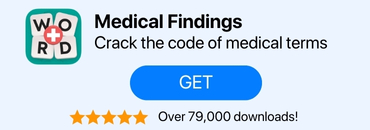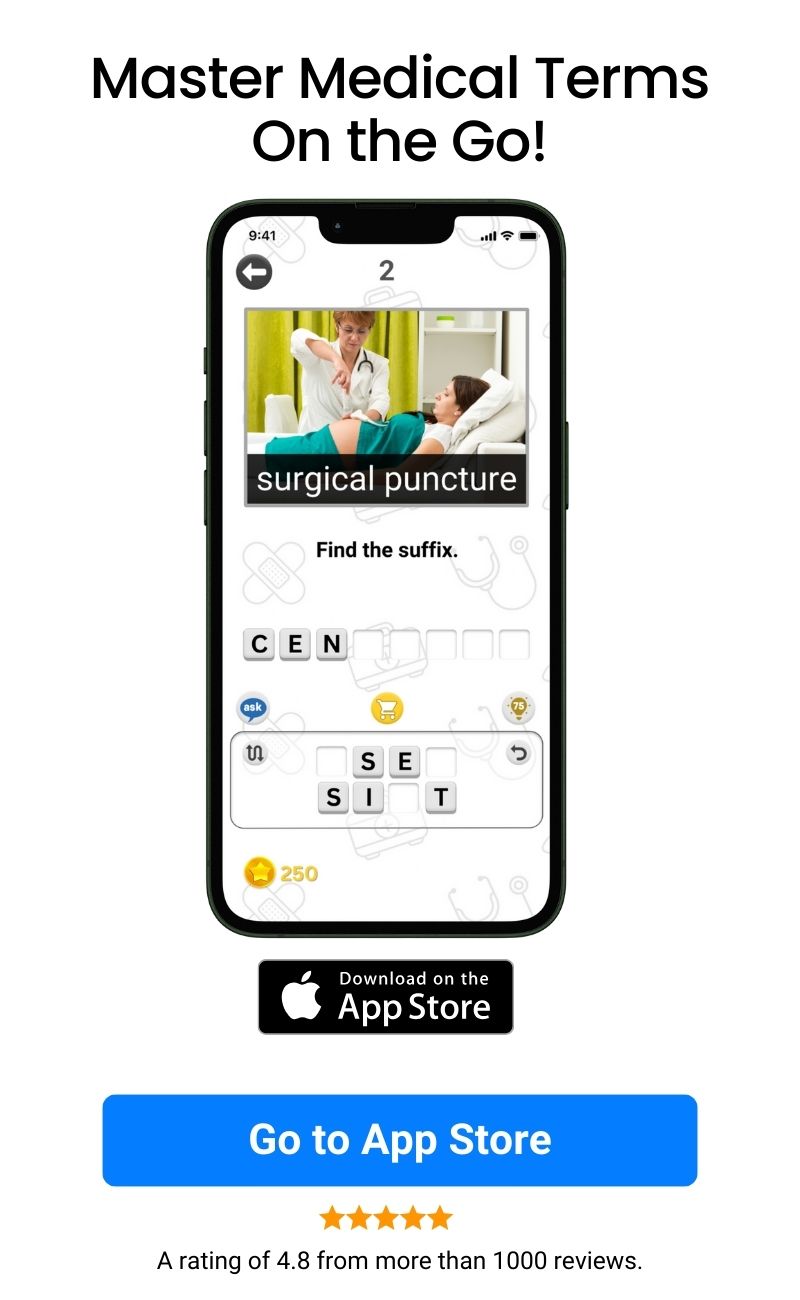We are now moving on to the second quiz in our series about common word roots and combining forms that relate to digestive systems.
Quick Review for the Quiz
Check out the flashcard version for a more detailed review.
| Word Root | Combining Form | Body Part or Condition |
|---|---|---|
| col, colon | col/o, colon/o | colon |
| dent, dent, odont | dent/o, dent/i, odont/o |
tooth or teeth
|
| diverticul | diverticul/o |
diverticulum
|
| duoden | duoden/o | duodenum |
| enter | enter/o | intestine (usually small intestine) |
| esophag | esophag/o | esophagus |
| gastr | gastr/o | stomach |
| gingiv | gingiv/o | gum |
| gnath | gnath/o | jaw |
| hepat | hepat/o | liver |
-
Question of
Find the combining form of the image highlighted.

-
col/o or colon/o
-
sial/o
-
herni/o
-
pancreat/o
Correct Wrong
col/o or colon/o is the combining form that refers to "colon". Colon, also known as large intestine or large bowel, is a large tube-shaped digestive organ. Among the principal functions of the large intestine are the absorption of water and electrolytes, the production and absorption of vitamins, and the formation and propulsion of feces toward the rectum.
-
-
Question of
Find the combining form of the image pointed to.

-
dent/o or odont/o
-
labi/o or cheil/o
-
herni/o
-
an/o
Correct Wrong
dent/o, dent/i or odont/o is the combining form that refers to "tooth or teeth". Mastication is the primary function of teeth, which consists of cutting, mixing, and grinding of food to allow the tongue and oropharynx to swallow it as a bolus.
-
-
Question of
Find the combining form described.

-
diverticul/o
-
lapar/o
-
pylor/o
-
cec/o
Correct Wrong
diverticul/o is the combining form that refers to "diverticulum (plural: diverticula)" . Your digestive system can develop small, bulging pouches known as diverticula. A majority of these tumors are found in the lower part of the large intestine (colon). A diverticulum usually forms when the weak spots in your colon give way due to pressure. As a result, small pouches protrude through the colon wall.
-
-
Question of
Find the combining form of the image pointed to.

-
duoden/o
-
gingiv/o
-
proct/o
-
palat/o
Correct Wrong
duoden/o is the combining form that refers to "duodenum". Located in the small intestine near the stomach, the duodenum is the first part that connects to the stomach. Food from the stomach is also digested in the duodenum. The duodenum absorbs nutrients (such as vitamins, minerals, carbohydrates, fats, and proteins) from food.
-
-
Question of
Find the combining form of the image highlighted.

-
enter/o
-
sial/o
-
jejun/o
-
labi/o
Correct Wrong
enter/o is the combining form that refers to "intestine (mostly small intestine)". Small intestines are located between the stomach and large intestines. They absorb most nutrients from food. Food is broken down in the small intestine by bile and pancreatic juice.
-
-
Question of
Find the combining form of the image highlighted.

-
esophag/o
-
lingu/o or gloss/o
-
cec/o
-
append/o or appendic/o
Correct Wrong
esophag/o is the combining form that refers to "esophagus". The esophagus is the muscular tube that attaches the pharynx (throat) to the stomach. It is responsible for carrying food and liquid from your mouth to your stomach.
-
-
Question of
Find the combining form of the image highlighted.

-
gastr/o
-
palat/o
-
ile/o
-
gingiv/o
Correct Wrong
gastr/o is the combining form that refers to "stomach". The stomach is a muscle organ situated in the upper part of the abdomen. It is shaped like a J. The esophagus delivers food to the stomach. Upon taking in food, your stomach contracts and releases acids and enzymes that break it down. Your stomach passes food to your small intestine after it has been broken down.
-
-
Question of
Find the combining form of the image pointed to.

-
gingiv/o
-
hepat/o
-
odont/o
-
bucc/o
Correct Wrong
gingiv/o is the combining form that refers to "gum". Gums cover the bones of your mouth and teeth with a soft covering. The tissues around the teeth protect them from bacteria by providing a secure seal.
-
-
Question of
Find the combining form of the image highlighted.

-
gnath/o
-
bucc/o
-
herni/o
-
uvul/o
Correct Wrong
gnath/o is the combining form that refers to "jaw". The jaw is a bone structure that anchors your teeth in place. Essentially, it consists of two parts. The upper part of the jaw is called the maxilla. It doesn't move. Mandible refers to the lower part of the jaw that can be moved.
-
-
Question of
Find the combining form of the image highlighted.

-
hepat/o
-
ile/o
-
enter/o
-
steat/o
Correct Wrong
hepat/o is the combining form that refers to "liver". Located in the right upper abdomen below the rib cage, the liver is the largest internal organ in the body. As well as removing toxins from the body's blood supply, it regulates normal blood sugar levels, controls blood clotting, among other functions.
-




